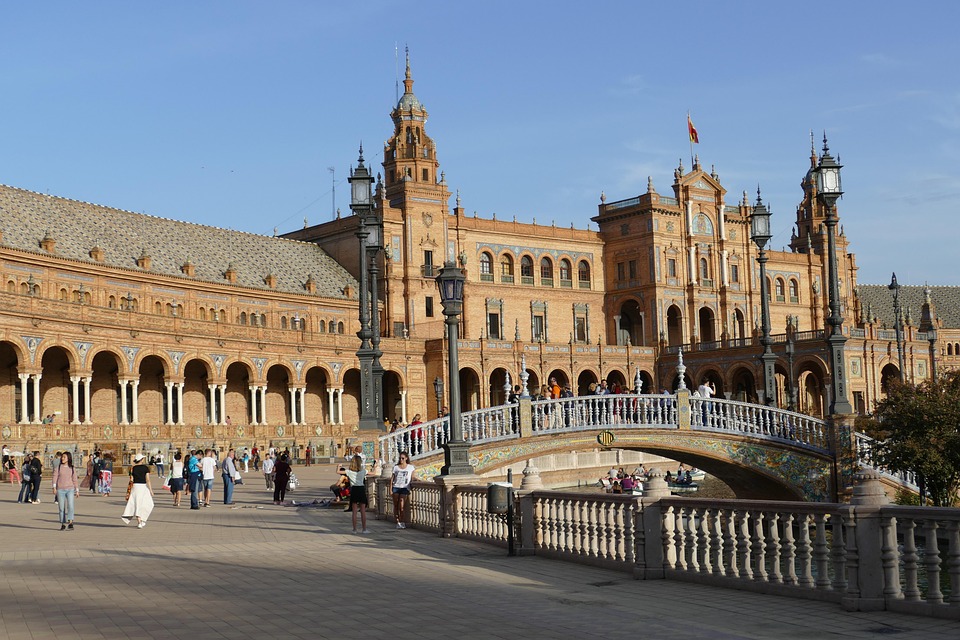History’s Mysteries: Unsolved Questions That Challenge Our Understanding
History is a tapestry of remarkable events, civilizations, and figures, woven together through time. Yet, among the vast expanses of recorded history, there are puzzles that remain unsolved, enigmatic questions that challenge our understanding of the past. These mysteries not only intrigue historians and archaeologists but also capture the imagination of the general public. In this article, we will explore some of the most perplexing historical enigmas, posing questions that have long stumped experts and inviting speculation from historians, scientists, and everyday enthusiasts alike.
1. The Fate of the Lost Colony of Roanoke
One of the most famous mysteries in American history is the disappearance of the Roanoke Colony. Established in 1587 on Roanoke Island in what is now North Carolina, the colony was England’s first permanent settlement in the New World. When Sir Walter Raleigh sent John White to lead a group of settlers to Roanoke, he eventually returned to England for supplies. Upon his return in 1590, he found the colony abandoned—its inhabitants vanished without a trace.
The only clue left behind was the word "CROATOAN" carved into a post, suggesting a possible connection to the nearby Croatoan Island. Several theories have emerged: did the colonists integrate with local tribes, succumb to disease, or face famine? Despite numerous expeditions and investigations since then, the true fate of the Roanoke settlers remains elusive[^1].
2. The Identity of Jack the Ripper
The identity of Jack the Ripper has captivated the public since the infamous murders in 1888. This unidentified serial killer operated in the Whitechapel district of London, brutally murdering at least five women. The Ripper’s identity has been the subject of extensive speculation, leading to numerous suspects ranging from local residents to prominent figures in London society.
The mystery deepens with the letters allegedly sent by the Ripper to the police and media, taunting authorities and creating a media frenzy. Despite the wealth of theories, from the plausible to the outlandish, the identity of Jack the Ripper remains a haunting shadow over London, illustrating the challenges of forensic techniques of the time[^2].
3. The Disappearance of the Sodder Children
On Christmas Eve in 1945, a fire consumed the Sodder family home in Fayetteville, West Virginia. George and Jennie Sodder lost five of their ten children in the blaze—or so they believed. In the aftermath, George was convinced that his children had been kidnapped, not perished in the fire. Their bodies were never found, and several peculiar details, such as the lack of remains and the family’s conflicting accounts, fueled speculation.
Over the years, the Sodders received letters claiming that their children were alive, including a photo that one of the parents believed resembled their son. Despite exhaustive investigations and the family’s efforts to find their missing children, the mystery remains unsolved, leaving numerous questions about that disastrous night[^3].
4. The Fate of the Amelia Earhart
Amelia Earhart was a pioneering aviator known for her attempt to circumnavigate the globe in 1937. Tragically, she vanished over the Pacific Ocean, along with her navigator Fred Noonan, during the final leg of the journey. The U.S. government launched a massive search but found no trace of the aircraft or its occupants.
Various theories have emerged, including the possibility of a crash, landing on an uninhabited island, or even being captured by the Japanese military. In recent years, researchers have presented evidence suggesting that Earhart may have landed on Gardner Island, now known as Nikumaroro, but concrete proof remains elusive[^4].
5. The Location of Cleopatra’s Tomb
Cleopatra VII, the last active ruler of the Ptolemaic Kingdom of Egypt, has captivated historians for centuries. Her tragic death in 30 BC has led to intense speculation about her final resting place. Ancient texts suggest that she was buried with Mark Antony in a grand tomb, yet its location has never been confirmed.
For decades, archaeologists have searched for Cleopatra’s tomb, hoping to find evidence of her reign and her life. Some theories suggest that it could be located near the temple of Taposiris Magna, near Alexandria, but despite various excavations, her tomb remains undiscovered, perpetuating the mystery surrounding her life and legacy[^5].
6. The Voynich Manuscript
The Voynich Manuscript is an illustrated codex, created in the early 15th century, written in an unknown script and language that has baffled cryptographers and linguists for centuries. The manuscript is filled with peculiar illustrations—many of plants not identifiable in the real world, astronomical diagrams, and human figures engaged in strange activities.
Despite numerous attempts to decode the text, no one has conclusively deciphered it, leading to theories ranging from it being a hoax to a lost language or an ancient medical text. The elusive nature of the Voynich Manuscript ensures its place in history as one of the most enigmatic documents ever created[^6].
7. The Pyramids of Giza
The Great Pyramids of Giza have stood for millennia as awe-inspiring monuments, yet many questions about their construction remain unanswered. Built around 4,500 years ago as tombs for the Pharaohs, these structures reflect extraordinary engineering and architectural prowess.
How did ancient Egyptians transport the massive stone blocks from quarries to the construction site? What tools and techniques did they employ to achieve such precision? Despite extensive archaeological research, many aspects of the pyramids’ construction methods remain murky, fueling speculation and debate within the academic community[^7].
8. The Nazca Lines
The Nazca Lines are a series of gigantic geoglyphs etched into the arid landscape of southern Peru. These designs, visible from the air, depict various figures such as animals, plants, and various geometric shapes. Dating back to between 500 BC and 500 AD, their purpose remains a subject of speculation.
Some theories suggest they served as astronomical calendars, while others propose they had religious significance, possibly related to water worship. Despite aerial surveys and extensive research, the motivations behind the creation of the Nazca Lines continue to elude scholars[^8].
9. The Oseberg Ship Burial
The Oseberg ship burial, discovered in Norway in 1904, revealed a richly adorned Viking ship used as a burial vessel. It contained the remains of two women, along with a treasure trove of grave goods. However, many questions remain about the ship’s occupants, their identity, and the significance of the items included in the burial.
The lack of written records about the individuals buried creates challenges for historians, leaving them to piece together a narrative based on archaeological findings. How did these women attain such prominence, and what does the burial tell us about Viking society? The Oseberg burial site continues to be a subject of study, yet many aspects remain a mystery[^9].
10. Stonehenge’s Purpose
Stonehenge, the prehistoric monument located in Wiltshire, England, has intrigued visitors for centuries. This iconic structure consists of large standing stones arranged in a circular formation, but its purpose remains an enduring mystery. Scholars have proposed various theories, including its use as an astronomical observatory, a religious site, or a burial ground.
Despite extensive research, the true function of Stonehenge eludes definitive explanation. Some recent studies suggest that its construction may have been tied to solar and lunar alignments, yet the monument’s purpose continues to challenge historians and archaeologists alike[^10].
11. The Identity of the "Man in the Iron Mask"
The "Man in the Iron Mask" was a mysterious prisoner during the reign of King Louis XIV of France, famous for being forced to wear a mask. His identity has sparked speculation and numerous theories over the centuries. Some historians suggest he might have been an illegitimate son of the king or a political prisoner who threatened Louis XIV’s reign.
Despite extensive research into French historical records, the true identity of the man remains elusive. The enduring mystery surrounding his life and imprisonment continues to fascinate those interested in history and monarchy[^11].
Conclusion
History is replete with mysteries that challenge our understanding of the past. While modern archaeology, technology, and historiography continue to shed light on various enigmas, many questions remain unanswered. The mysteries of Roanoke, Jack the Ripper, Amelia Earhart, and others prompt us to not only explore but also reflect on humanity’s complex past. These unsolved questions invite us to consider how much we still have to learn about the intricacies of human experience and the history that shapes our societies today. As we continue to search for answers, these mysteries will undoubtedly persist in capturing our imaginations and challenging our historical narratives.
[^1]: "The Mystery of the Lost Colony of Roanoke," National Park Service.
[^2]: "Jack the Ripper: The Definitive History," Paul Begg.
[^3]: "The Sodder Children: A True Crime Mystery," Smithsonian Magazine.
[^4]: "Amelia Earhart: The Disappearance," History.com.
[^5]: "Searching for Cleopatra’s Tomb," CNN Travel.
[^6]: "The Voynich Manuscript: A Book Nobody Can Read," PBS.
[^7]: "How the Great Pyramids Were Built," National Geographic.
[^8]: "Understanding the Nazca Lines," BBC.
[^9]: "The Oseberg Ship Burial: New Findings," The Viking Society.
[^10]: "The Mystery of Stonehenge," English Heritage.
[^11]: "The Man in the Iron Mask: A Historical Enigma," History Magazine.


























Add Comment